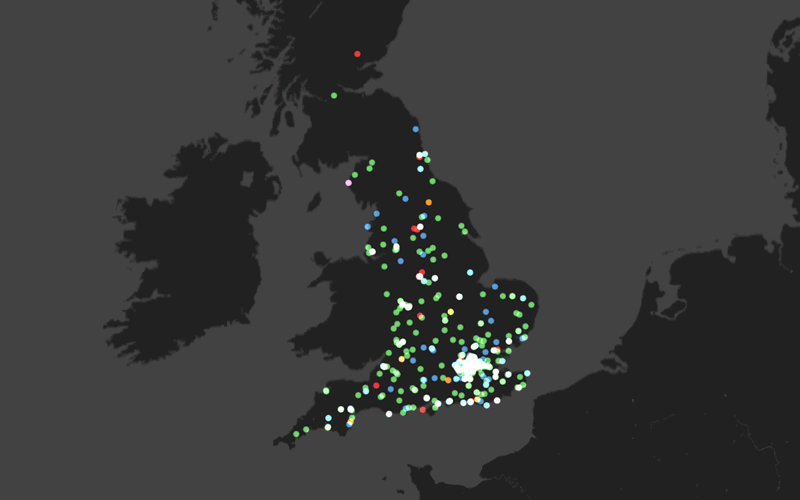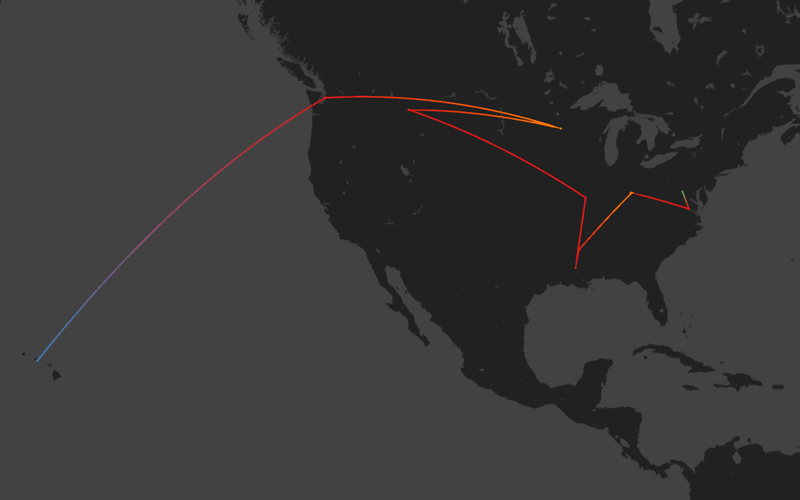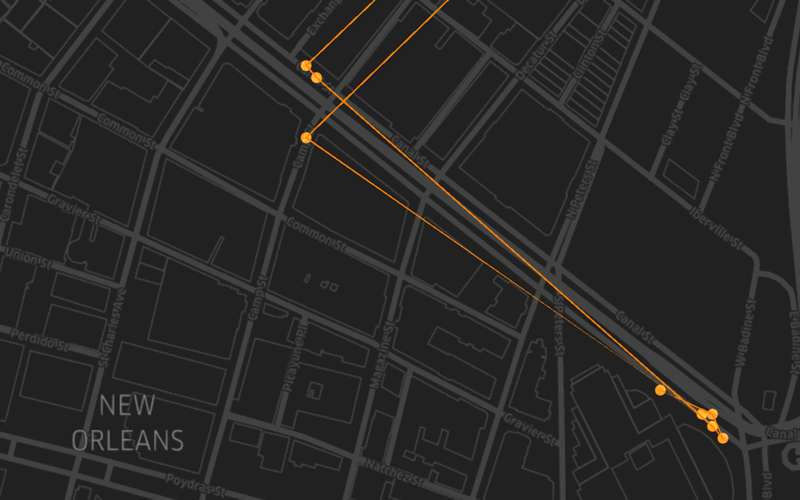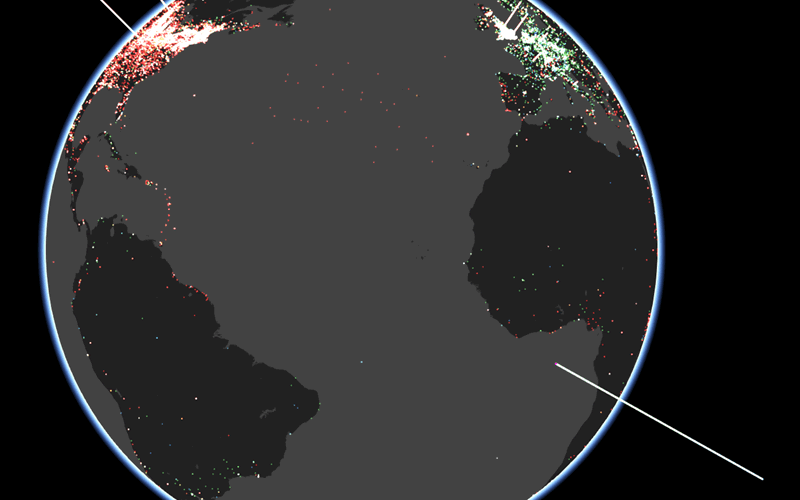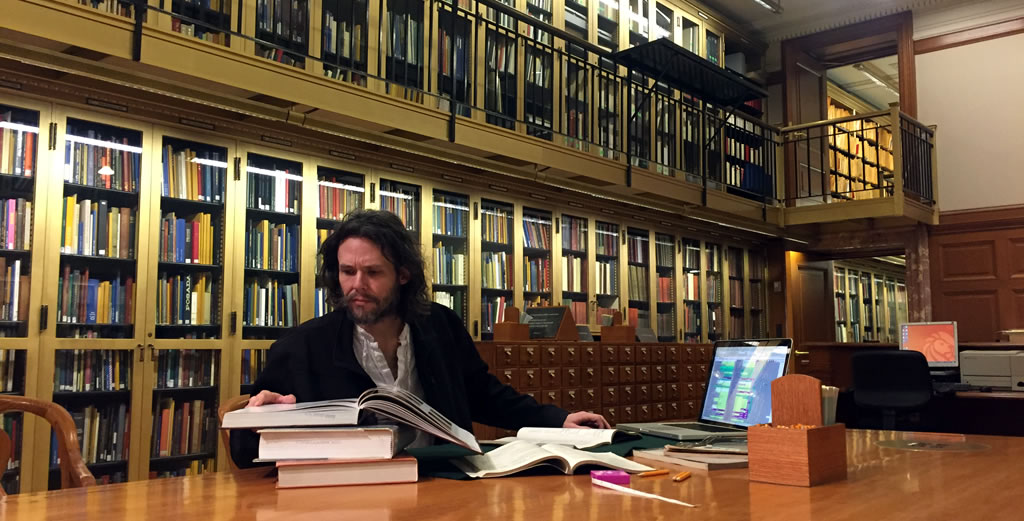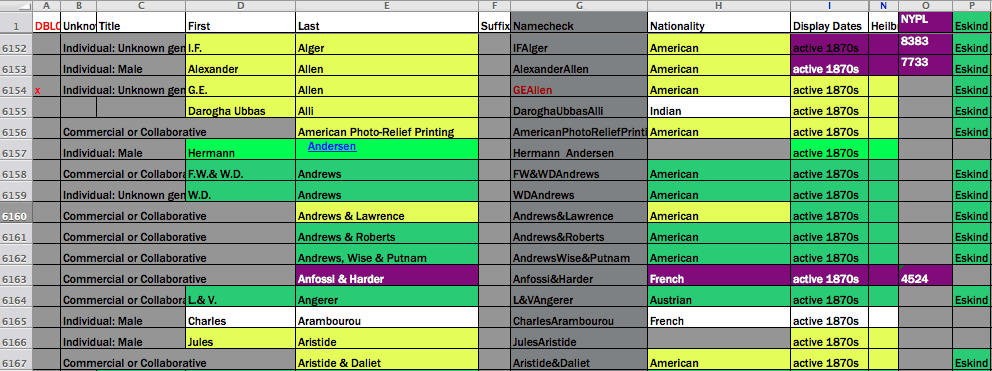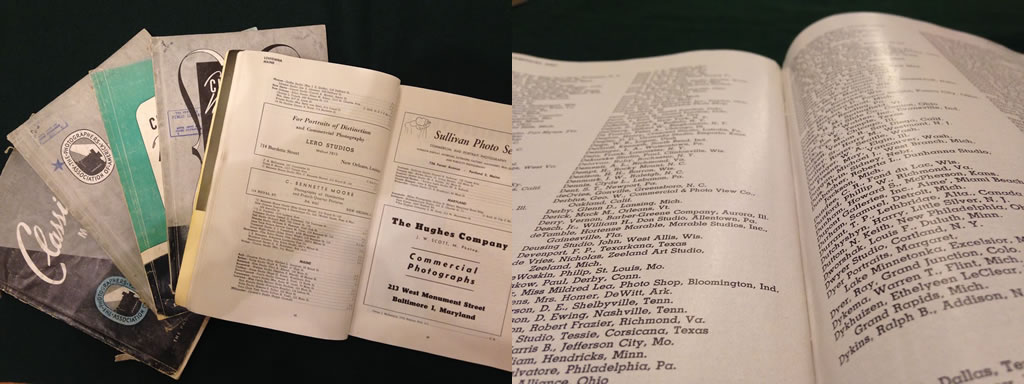I’m a photographer. Can I be listed in PIC?
Given the ubiquity of cameras in the digital age, it’s simply not possible for us to maintain biographies for all contemporary photographers. To maintain PIC as a useful research and discovery tool, we include photographers in the collections of public institutions, or who are otherwise newsworthy. If your work is in a museum somewhere, ask them to contact us with their list of photographers. We also include many contemporary photographers with biographies in Wikipedia and WikiData, which maintain their own standards of notability. We regularly update PIC with new entries found there.
I have a collection of photographs. Will PIC link to it?
PIC does not track private collections or the stables of commercial galleries. If you are a museum, library, historical society, or other archive which is open to the public, we’d love to learn more about your photograph collection. Contact us at pic@nypl.org!
Why do some of my results not match my query?
PIC uses “fuzzy search” to give you results, so if you search for “Mary” you'll also get “Marc”. We understand, that can be a bit annoying. But if the search was too literal, you wouldn't find “Michèle” when you searched “Michele”. We think having too many results is the better problem to have.
It looks like there are fewer than 116,000 names in PIC. Why is that?
We "refresh" the data frequently, so you'll always see our most recent, corrected information. That process takes about 7 to 9 minutes (it's a bunch of data!). If you happen to search PIC while this is happening, you may see a lower number of constituents. Refresh your browser, and that number will grow. As of May, 2016 you should be seeing about 116,100 names.
Why are there so many people on a tiny island off the west coast of Africa?
That’s not actually an island, and there’s not actually anyone there. That point is located at the coordinates 0’ latitude & 0’ longitude, and we use it to map information when we don’t know a location (in the cartography world, it’s often called “Null Island”). If, for instance, we know someone was born in 1872, but we don’t know where, we put the point on Null Island. You can help us evacuate the island by finding locations we’re missing!
I have information PIC lacks, or I’ve spotted an error. How do I contribute or request a correction?
Please let us know! Use the feedback link in the bottom right of the map. It is helpful if you include the Record ID number to identify the photographer in question. That ID can be found after the Name, Nationality and Dates of the constituent.
If PIC is about photographer’s identities, why is the map so prominent?
Time and place can be essential information if you’re trying to identify a photographer. With hundreds of entries for people with the last name “Williams”, it would be really inefficient to scroll through, and click into, each entry to find the “Williams” active in the location you’re looking for. Also, place-names can change over time, and national borders move, so the map allows you to browse for studios in Saint Petersburg, even if the city was called Leningrad at the time. Also, PIC data skews heavily toward the United States and Europe, but we want to represent the whole of photo history. It’s important to be able to see at a glance where we have more work to do. Plus, maps are just fun!
Why can’t I click a point on the map and see who’s there?
We experimented with that, but for many reasons we concluded that it added more complexity and confusion to navigating the data. The good news is- there’s a neat workaround. Zoom into the area or point you’re interested in and to the left, select “In Map Area: Select Area on Map”. Then use your mouse to draw a rectangle around the area or point (click and drag), and click “Apply”. The results column will show you only the names within these boundaries. Try it yourself, search for your hometown in the Location search bar, and use this trick to see who’s there!
Where did all these photographer biographies come from?
We’ve listed all of our sources in each record so you can double check our work. It’s a mix of trusted books, databases and websites published by photography scholars, as well as Wikipedia and Wikidata. When a source is a US Census, City or Business Directory, Military Records or Death Records, that means NYPL staff has conducted original research on the subject. Other sources include:
We'll announce other sources periodically.
Is PIC an Authority File?
You will notice many of the PIC entries contain links to external authorities such as VIAF, ULAN and Wikidata. These authority files provide useful persistent identifiers that ensure we are all talking about the same thing, Dorothea Lange for example. When used in the cataloging of materials, these identifiers begin to form a web of data across institutions. In the future, as NYPL’s linked data program grows, we hope to contribute to this web of data by publishing our own identifiers and RDF data for the entities found in PIC, especially for those not found in other authorities. Until then PIC can aid in connecting you to these existing authority files.
Where can I learn more about the history of photography or photographic processes?
Glad you asked! The Miriam and Ira D. Wallach Division of Art, Prints and Photographs: Photography Collection staff have compiled information on processes, a timeline of photo history and a bibliography to get you started. If you want to see original photographs or photo books in the Photography Collection, search our holdings in the Prints and Photographs Online Catalog. Once you've found what you want and are ready to make an appointment, or if you need further research assistance, email us at photography@nypl.org.
Can I get the data?
Yes. The data is available for download from this GitHub repository. You can browse an alphabetical list of all constituents. You can also export the first 1000 search results from the map interface. Let us know if you've done something cool with the PIC data. We'd love to see it!
What technology is behind this map?
The map is an experimental interface that makes use of CesiumJS, a JavaScript library for 3D maps. CesiumJS is built on top of WebGL, a technology for high-performance 3D graphics supported by the latest browsers without plug-ins. We wanted to explore the possibilities offered by WebGL for visualizing and interacting with large, geographic datasets. We are also using ElasticSearch to filter the data in many facets. All the code is available on GitHub but you're probably more interested in the map JavaScript code (which is actually TypeScript). If you have any questions, don't hesitate to contact us on Twitter.
I have other questions not answered here!
Ask away: pic@nypl.org
